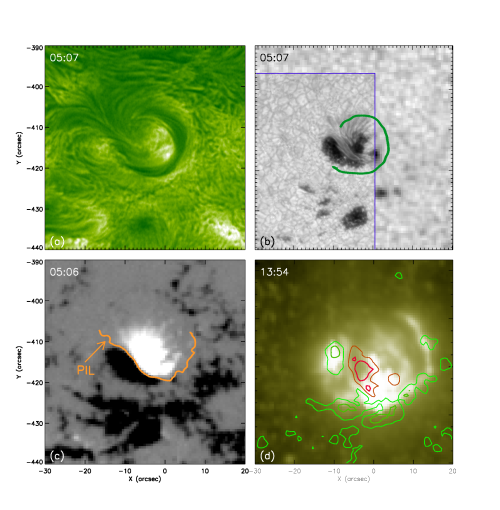Researchers from the Yunnan Observatories and Yunnan Normal University have detailed the significant effects of a solar flare that occurred between May 9 and 10, 2022. Using imaging data from the Solar Dynamics Observatory (SDO) and the 1-meter New Vacuum Solar Telescope (NVST), the researchers have investigated how an X1.5 solar flare can cause a significant rearrangement of sunspot magnetic field. The related research result, "Rearrangement of sunspot magnetic field caused by an X1.5 solar flare", was recently published in the Monthly Notices of the Royal Astronomical Society.
Solar flares, sudden releases of energy caused by magnetic reconnection, occur on timescales as short as a few minutes, during which the coronal magnetic field is rapidly reconfigured, including the eruption of flux ropes above and the formation of post-flare loops below the reconnecting current sheet. This process occurs rapidly in the corona and is not expected to have a considerable impact on the photosphere.
Recent years have seen intensive studies of sudden changes in sunspot structures associated with flares. For example, after a flare, sunspot penumbral structures may increase in size or become darker near the polar inversion line, whereas they usually decay or disappear in the outer regions relative to the polar inversion line. Further studies of the magnetic field in the photosphere show that the distribution of the horizontal magnetic field along the polar reversal line becomes stronger after the eruption, while the region away from the polarity inversion line decays, i.e., the magnetic field near the polarity inversion line becomes more horizontal, while the relative peripheral region, in contrast, becomes more vertical.
This study found a circular filament formation event driven by the rotation of a sunspot, and observed that the subsequent eruption of this filament had a significant feedback effect on the sunspot structure, as evidenced by a significant contraction of the sunspot. The magnetic field in the outer regions converges towards the polarity reversal line, leading to an increase in magnetic field strength at the polarity inversion line and a decrease in the magnetic field in the outer regions.
This magnetic field rearrangement was directly related to the change of the strong horizontal Lorentz force towards the polarity inversion line that occurred during flares, indicating that flares, as a typical solar eruptive activity, not only change the local magnetic field structure in a short period of time, but also influence the sunspot evolution process in the long term.
Co-author of the study, YAN Xiaoli, stated, “This study further reveals the intrinsic relationship between solar filament eruptions, solar flares, and sunspot changes, and advances the understanding of the fine physical processes of solar flares.”

Figure 1: Overview image of the active area. (a): NVST Hα image. (b): NVST TiO and HMI intensity images. (c): HMI magnetogram. (d): AIA 1600 angstroms image.
Contact:
YAN Xiaoli
Yunnan Observatories
E-mail: yanxl@ynao.ac.cn